
When it comes to road biking, comfort and speed are two of the most sought-after qualities. Whether you're racing through city streets or embarking on long-distance rides, the way your bike absorbs vibrations from the road can have a significant impact on both your comfort and performance. Vibration-absorbing road bikes, particularly those made from advanced materials like carbon fiber, offer a unique advantage in this area. But how exactly do they enhance your ride? Let's break it down, focusing on bikes like the Trifox Carbon Fiber Road Bicycle Ultra Light SF-QR-20. 1. Reducing Fatigue for Longer Rides One of the most noticeable benefits of a vibration-absorbing road bike is reduced fatigue. When riding on rough or uneven surfaces, the constant vibrations travel through the bike frame and into your body. Over time, these vibrations can lead to discomfort and muscle fatigue, especially on longer rides. This is particularly true for cyclists who ride for extended hours or on roads that aren't perfectly smooth. The Trifox Carbon Fiber Road Bicycle Ultra Light SF-QR-20 is equipped with a carbon fiber frame that naturally absorbs and dampens road vibrations. Carbon fiber has a unique ability to flex and absorb shock, which helps to reduce the impact forces transmitted to the rider. This results in less strain on your arms, legs, and back, allowing you to ride for longer periods without feeling worn out. Whether you’re training for a race or enjoying a leisurely ride, a vibration-absorbing bike keeps you comfortable, allowing you to push further without the nagging aches that can derail your ride. 2. Enhanced Comfort on Rough Roads While many road cyclists dream of smooth, pristine pavement, the reality is that most of us will encounter rough patches, cracks, and uneven road surfaces. A traditional road bike without vibration-damping technology might transfer these bumps directly to your body, resulting in a jolting ride that can quickly become uncomfortable. The Trifox SF-QR-20 addresses this issue with its carbon fiber construction, designed specifically to reduce vibrations without sacrificing stiffness or performance. The material’s natural ability to absorb shocks means that even when you’re riding on less-than-ideal surfaces, you’ll experience a smoother, more enjoyable ride. This level of comfort allows cyclists to focus on their technique and performance rather than being distracted by discomfort, making the bike ideal for those who ride on a variety of road conditions. 3. Improved Handling and Control A bike that absorbs road vibrations doesn’t just provide comfort—it also improves handling and control. Vibrations from the road can cause your hands and arms to feel fatigued, which reduces your ability to hold the handlebars with a steady grip. This can be especially problematic during high-speed descents or sharp turns, where precise handling is essential. With a vibration-absorbing road bike like the Trifox Carbon Fiber Road Bicycle, the reduced vibrations lead to better control of the bike. The smoother ride allows for a firmer grip on the handlebars, improving your ability to maintain stability, even in challenging conditions. Whether you’re maneuvering through a tight corner or descending at high speed, the bike’s ability to reduce vibrations keeps you connected to the road, giving you more confidence and control. 4. Increased Speed with Less Effort While comfort and control are crucial, speed is the ultimate goal for many road cyclists. A smoother ride means you can exert less energy fighting the effects of road vibrations, allowing you to conserve more strength for pedaling and acceleration. The result? More efficient riding and the ability to maintain a faster pace with less effort. Carbon fiber frames, like those on the Trifox SF-QR-20, are not only lightweight but also designed to flex in a way that maximizes energy transfer. This means that the bike absorbs shocks without wasting energy, allowing you to ride faster and with less strain. By reducing fatigue and increasing comfort, vibration-absorbing bikes make it easier to push your limits, whether you're racing or enjoying a fast-paced ride on your local roads. 5. Long-Term Health Benefits Consistent exposure to high-impact vibrations can also lead to long-term physical issues, particularly for cyclists who ride frequently. Repeated shocks to the body can cause discomfort in the joints, wrists, and spine, potentially leading to injuries over time. Vibration-absorbing bikes, such as the Trifox Carbon Fiber Road Bicycle Ultra Light SF-QR-20, are designed to minimize these impacts, providing long-term health benefits. By reducing the strain on your body, these bikes help prevent injury and ensure that you can continue riding for years to come. Conclusion A vibration-absorbing road bike like the Trifox Carbon Fiber Road Bicycle Ultra Light SF-QR-20 offers significant advantages in terms of both comfort and performance. By reducing road vibrations, these bikes allow cyclists to ride longer with less fatigue, improve their control and handling, and maintain a faster pace with greater efficiency. Whether you're a competitive racer or a casual rider, the enhanced comfort provided by a vibration-absorbing bike will help you enjoy your rides more and push your limits with greater ease. For cyclists looking to maximize both comfort and speed, investing in a bike with vibration-damping technology is a smart choice that will make every ride smoother, faster, and more enjoyable.
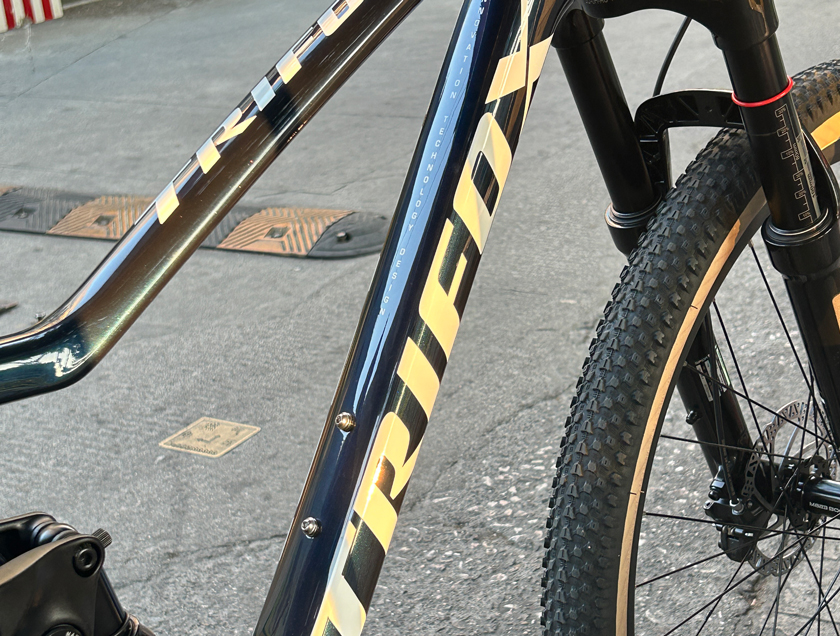
When it comes to mountain biking, especially for trail riders, choosing the right bike can make a world of difference. One of the most debated decisions among cyclists is whether to opt for a dual suspension bike or stick with a hardtail. Dual suspension bikes, which feature both front and rear shocks, are known for their ability to absorb impacts and provide a smoother ride on rough terrain. However, they come with a higher price tag and more maintenance. So, are dual suspension bikes really worth the investment for trail riders? Let’s break it down. 1. Superior Comfort on Rough Terrain One of the most obvious advantages of dual suspension bikes is the comfort they provide. Trail riding often involves navigating rocky paths, bumpy trails, and obstacles that can create significant jolts and impacts. Hardtail bikes, which only have a suspension fork at the front, can transfer a lot of that shock directly to the rider, leading to discomfort, fatigue, and a less enjoyable ride. Dual suspension bikes, like the Trifox Pioneer Bike, are equipped with both front and rear shocks that work together to absorb impact. This creates a much smoother ride, allowing you to handle rough terrain with greater ease. The rear suspension helps to absorb shocks from bumps and drops, making the ride more comfortable and reducing the risk of injury from jarring impacts. For trail riders who often encounter technical terrain or prefer longer rides, the added comfort of dual suspension can be a game-changer. 2. Better Control and Handling Dual suspension bikes also offer superior control and handling compared to hardtails, especially on downhill and technical sections of the trail. The rear suspension helps to keep the rear wheel planted on the ground, improving traction and stability. This is particularly important when navigating loose gravel, wet conditions, or steep descents, where maintaining control is crucial. The Trifox Pioneer Bike is designed with a robust dual suspension system that enhances handling, even in challenging conditions. The bike’s front and rear shocks work in unison to maintain tire contact with the ground, providing more consistent traction and allowing you to tackle technical sections with confidence. Whether you’re navigating tight switchbacks or blasting down a rocky descent, the improved stability and control that come with dual suspension can make a noticeable difference in your performance. 3. Reduced Fatigue on Long Rides Riding on rough terrain can be exhausting, particularly on long rides. The constant jarring and bouncing of a hardtail bike can take a toll on your body, leading to fatigue and discomfort. On the other hand, dual suspension bikes reduce the impact forces that travel through your body, making the ride less taxing. This is especially beneficial for trail riders who enjoy longer rides or multi-day adventures. The Trifox Pioneer Bike offers excellent suspension performance that helps reduce the strain on your arms, legs, and back. With the rear suspension absorbing much of the shock, riders can focus on the ride itself rather than worrying about fatigue or discomfort. If you’re planning on tackling challenging trails or going for long-distance rides, the added comfort and reduced fatigue provided by dual suspension will allow you to ride longer and harder without burning out. 4. Increased Safety and Confidence A well-designed dual suspension system can also increase your safety on the trails. By providing better traction, stability, and control, these bikes help riders stay in control during high-speed descents, technical maneuvers, and challenging terrain. When you’re riding on a bike that feels stable and secure, you’re more likely to take on challenging obstacles with confidence. The Trifox Pioneer Bike is equipped with advanced suspension technology that enhances both safety and performance. Whether you’re descending a steep hill or negotiating an uneven rock garden, the bike’s suspension keeps you in control and minimizes the risk of losing traction or control. This makes dual suspension bikes an excellent choice for riders who enjoy pushing their limits and tackling more advanced trail features. 5. The Cost vs. Benefits Debate Of course, dual suspension bikes come with a higher price tag compared to hardtails. The additional cost is typically due to the more complex suspension systems, higher-quality components, and additional maintenance required. For some riders, especially those just starting out or those who primarily ride smooth trails, a hardtail might offer all the performance they need at a more affordable price. However, for serious trail riders who often ride on rough, technical trails, the benefits of a dual suspension bike are hard to ignore. The increased comfort, better control, and reduced fatigue make the higher investment well worth it for riders who want to maximize their performance and enjoy a smoother, more enjoyable ride. So, are dual suspension bikes really worth the investment for trail riders? The answer largely depends on the type of riding you do and your priorities as a cyclist. If you regularly ride on rough, technical terrain or enjoy long-distance trail rides, a dual suspension bike like the Trifox Pioneer Bike can significantly improve your ride quality, comfort, and performance. While they do come with a higher price tag, the added benefits of better control, reduced fatigue, and increased safety make them an excellent choice for serious trail riders who want to take their biking experience to the next level.
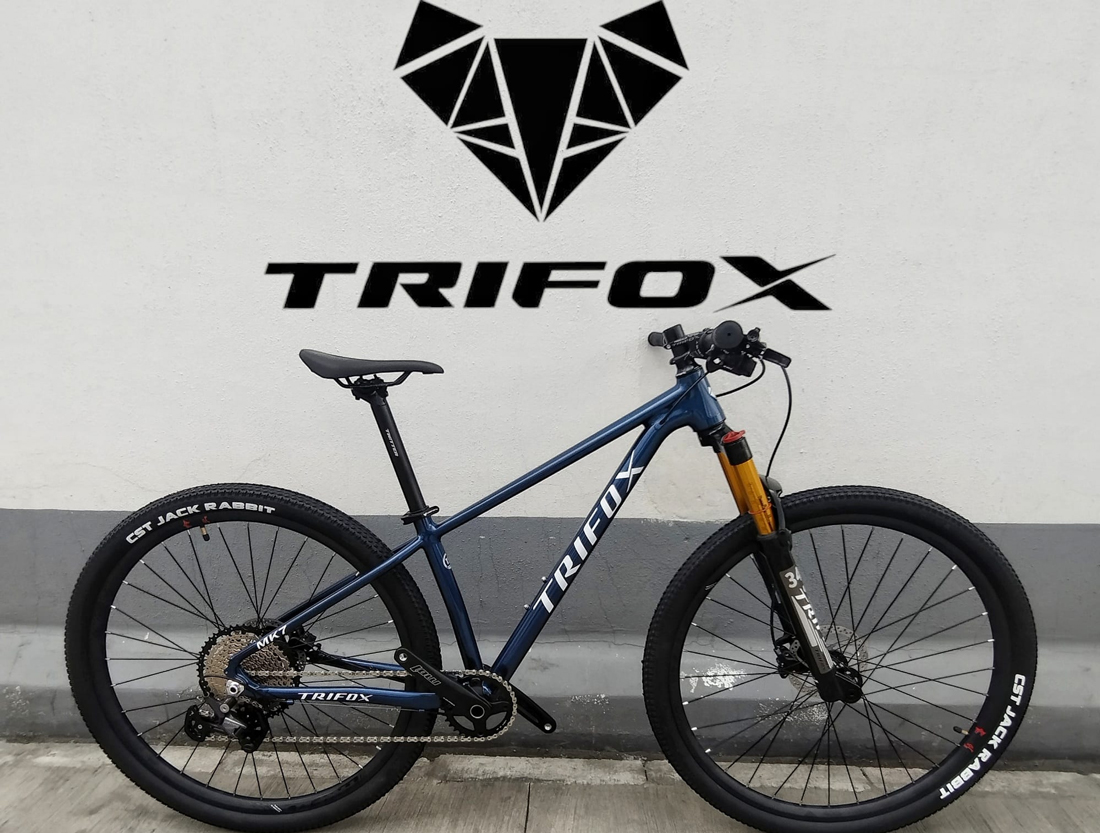
When it comes to mountain biking, durability is just as important as speed, agility, and comfort. One aspect of durability that often gets overlooked is the frame’s deformation resistance. Deformation resistance refers to a bike’s ability to withstand stress, pressure, and impact without losing its shape or structural integrity. For serious riders, especially those tackling rugged terrain or high-intensity trails, a higher deformation resistance bike is essential. But why exactly does this matter for riders? 1. Increased Durability and Longevity The primary benefit of a bike with higher deformation resistance is enhanced durability. Mountain bikes are put through a lot of stress, whether it’s from rough trails, jumps, or technical sections. Frames that lack sufficient deformation resistance are more likely to bend, crack, or break under pressure. This compromises the bike’s performance and can lead to costly repairs or the need for a full replacement. The Trifox Aluminum Mountain PeakTrail Xtreme MK7 Bike is a great example of a bike designed with higher deformation resistance. Its frame is made from premium aluminum alloy, a material known for its strength and ability to withstand heavy loads. Aluminum can handle significant stress without permanently deforming, making it an excellent choice for riders who regularly push their bikes to the limit. For mountain bikers who enjoy aggressive riding, this added resistance ensures that the frame remains intact, ride after ride. 2. Improved Safety on the Trail A frame with higher deformation resistance is not only about performance; it’s also about safety. When a bike frame deforms or weakens over time, it can compromise the overall stability and safety of the bike. For example, a bent or cracked frame may affect your bike’s handling, making it more difficult to control, especially during fast descents or sharp turns. In extreme cases, a damaged frame could lead to a failure, which is dangerous for the rider. With a bike like the Trifox MK7, which features superior deformation resistance, riders can feel confident knowing that their bike can handle rough terrain without compromising their safety. The sturdy frame is built to absorb impacts and resist deformation, ensuring that the rider stays in control, even in the most demanding conditions. 3. Better Performance on Rugged Terrain Mountain biking often involves riding over rocks, roots, and uneven surfaces that put a significant amount of pressure on the frame. A bike with low deformation resistance can struggle to maintain performance on these types of trails. Over time, constant impacts and stresses can cause the frame to warp, reducing the bike’s overall efficiency and handling. A bike like the Trifox Aluminum Mountain PeakTrail Xtreme MK7 is designed to handle these kinds of challenges. With its high deformation resistance, the frame stays true to its form, allowing for better handling and control on rugged trails. Whether you’re navigating rocky terrain, jumping over obstacles, or riding through muddy paths, the bike’s frame integrity ensures a smooth, stable ride. 4. Maintaining Frame Geometry Frame geometry is crucial to a bike’s overall handling and performance. If the frame starts to deform under stress, it can alter the bike’s geometry, negatively affecting the way it rides. For example, the angles of the head tube, seat tube, and bottom bracket can shift, leading to changes in how the bike handles turns, descents, and climbs. This is especially problematic for riders who demand precision and control, whether they’re racing or navigating technical trails. A bike with higher deformation resistance, like the Trifox MK7, maintains its frame geometry even after continuous stress. This ensures that the bike continues to handle as designed, providing a consistent and reliable ride throughout its lifespan. For serious riders, maintaining the bike’s geometry is crucial for peak performance. 5. Cost-Effective in the Long Run While bikes with higher deformation resistance may cost more upfront, they are often more cost-effective in the long term. The durability of the frame means that riders won’t need to replace their bike as often due to damage or wear and tear. This can save a significant amount of money on repairs, replacements, and maintenance over time. The Trifox Aluminum Mountain PeakTrail Xtreme MK7 is an investment that offers long-term value. The frame's resistance to deformation ensures that it holds up over countless rides, maintaining both its structural integrity and performance. For riders who put their bikes through tough conditions, this durability can be well worth the price. A higher deformation resistance bike is essential for serious riders who demand durability, safety, and performance. Bikes like the Trifox Aluminum Mountain PeakTrail Xtreme MK7 are designed to withstand the stresses of aggressive riding, ensuring a long lifespan, stable handling, and consistent performance. Whether you're tackling rugged trails or navigating challenging terrain, a bike with superior deformation resistance will give you the confidence and reliability you need for a safe and enjoyable ride. For any rider serious about pushing their limits, investing in a bike with high deformation resistance is a smart choice that will pay off in the long run.
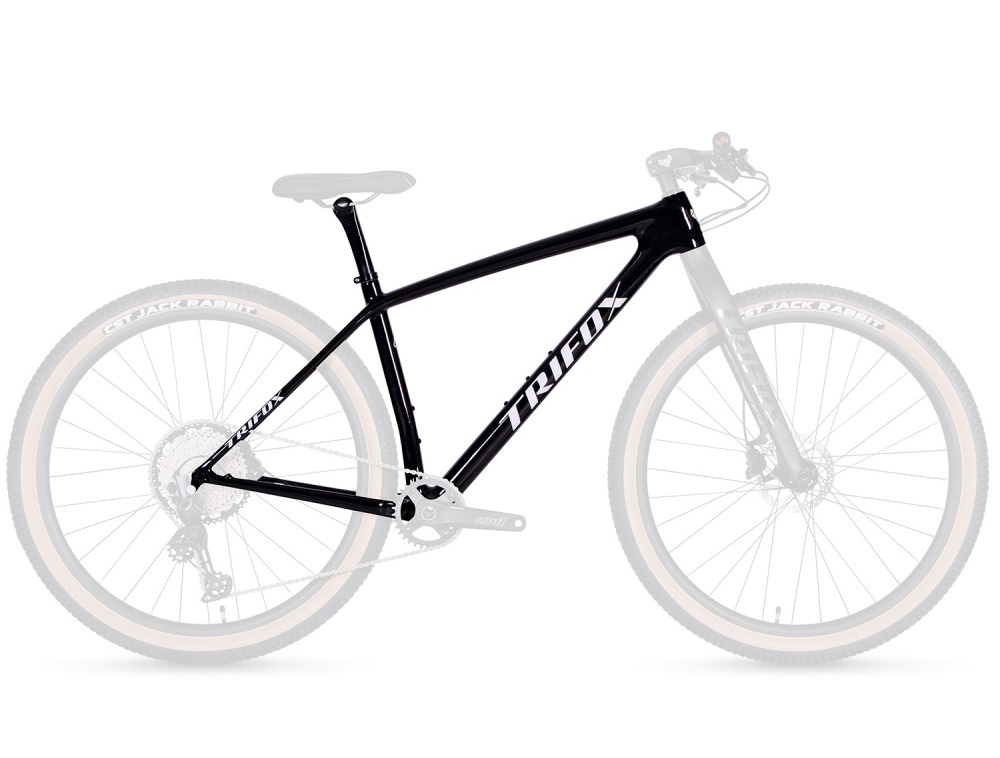
For serious cyclists, every component of the bike matters. From tires to suspension, each part plays a critical role in performance. Among the many features that can enhance a cyclist’s experience, the frame stands out as one of the most important. Ultra-light frames, particularly those made from advanced materials like carbon fiber, have gained popularity in recent years for a reason: they significantly improve overall ride performance. But what exactly makes ultra-light frames the ultimate choice for serious cyclists? 1. Increased Speed and Acceleration One of the most immediate benefits of an ultra-light frame is the improvement in speed and acceleration. Cyclists know that lighter bikes are easier to handle and more responsive, especially when climbing steep hills or sprinting on flat terrain. The less weight you need to move, the faster and more efficiently your bike will perform. The Trifox Lightweight Carbon MTB Hardtail Frame BOOST SDY20 is a perfect example of a frame that prioritizes lightness without sacrificing strength or durability. Its carbon fiber construction provides an impressive reduction in weight compared to traditional aluminum or steel frames. For serious cyclists, this means quicker acceleration out of turns, less effort when pedaling uphill, and an overall increase in riding speed. 2. Improved Handling and Maneuverability Ultra-light frames also significantly enhance a bike’s handling and maneuverability. A lighter frame allows for quicker changes in direction and better control, which is particularly useful for mountain bikers who tackle technical trails, sharp corners, and obstacles. The less weight you have to manage, the more responsive your bike becomes, making it easier to navigate tight spots and maintain stability on rough terrain. The Trifox SDY20 frame, built with advanced carbon fiber layup techniques, ensures that despite its light weight, the frame remains stiff and responsive. This means that cyclists can enjoy the agility of a lightweight bike without sacrificing the solid, secure feel needed for high-performance riding. 3. Enhanced Comfort for Long Rides While light frames are often associated with speed, they also contribute to increased comfort, especially on long rides. Lightweight materials like carbon fiber absorb road vibrations more effectively than heavier metals like aluminum or steel. This results in a smoother, more comfortable ride, reducing fatigue on rougher terrain and ensuring that you can ride longer distances without discomfort. The Trifox Lightweight Carbon MTB Frame is engineered with this in mind. Carbon fiber’s natural vibration-damping properties help absorb shocks from the trail, ensuring that even during long mountain biking adventures, your body experiences less strain. For cyclists who participate in endurance races or long off-road rides, the comfort factor of a lightweight frame is a game-changer. 4. Durability and Strength without Compromise One of the most impressive aspects of ultra-light frames like the Trifox SDY20 is that they manage to balance lightness with strength. Carbon fiber is not only incredibly light but also very strong, making it ideal for high-performance bikes. Unlike traditional lightweight metals, carbon fiber’s strength-to-weight ratio allows for a frame that’s both durable and resistant to fatigue, ensuring that it can withstand the rigors of mountain biking. This means that ultra-light frames don’t just reduce weight—they also increase a bike’s longevity. The Trifox SDY20, with its advanced carbon design, is built to last, handling the shocks and stress of off-road cycling without compromising the integrity of the frame. 5. A Competitive Edge For serious cyclists who are focused on performance, every advantage counts. An ultra-light frame can give you the edge over your competition, especially in races or events where every second matters. The combination of speed, acceleration, and handling that comes with a lightweight frame can mean the difference between finishing first or second. With the Trifox Lightweight Carbon MTB Frame, cyclists gain a competitive advantage thanks to its superior weight reduction and responsive design, helping them push harder and faster than ever before. Conclusion Ultra-light frames, such as the Trifox Lightweight Carbon MTB Hardtail Frame BOOST SDY20, are the ultimate choice for serious cyclists due to their ability to enhance speed, acceleration, handling, and comfort. By reducing weight without compromising durability, these frames allow riders to achieve greater performance, especially on challenging terrain. Whether you're climbing steep hills, sprinting on flats, or navigating technical trails, the benefits of an ultra-light frame are undeniable. For any cyclist looking to take their performance to the next level, investing in an ultra-light carbon fiber frame is a smart choice that pays dividends in speed, agility, and endurance.
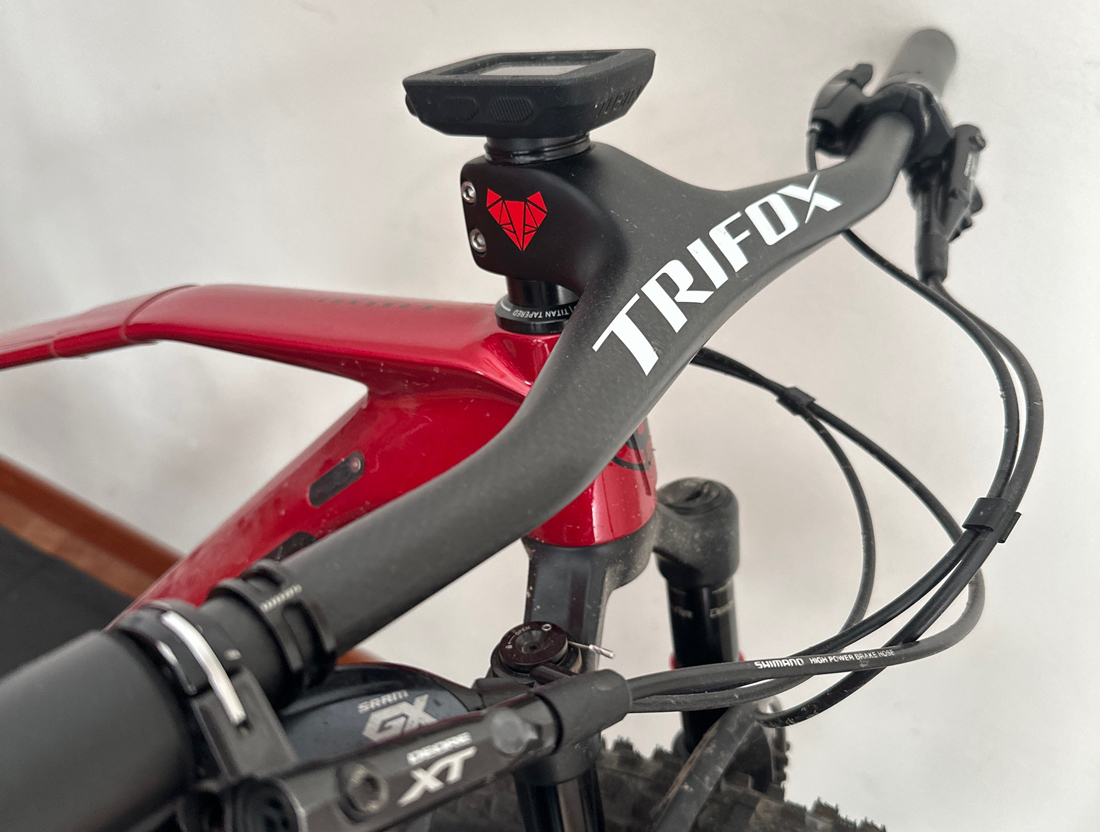
Mountain biking is all about performance, and every aspect of your bike can make a difference—whether it’s your tire choice, frame design, or the handlebars that you use. Aerodynamic handlebars, such as those found in cutting-edge MTB designs, are an often overlooked but powerful component in optimizing your ride. But how exactly can these handlebars improve your MTB performance? Let’s explore the benefits. 1. Reduced Air Resistance for Faster Rides Aerodynamic handlebars are designed to minimize drag, the resistance caused by air friction. On the trail, especially at higher speeds, every little bit of drag counts. By reducing wind resistance, aerodynamic handlebars allow riders to conserve energy and maintain higher speeds with less effort. This is particularly beneficial on flat sections of the trail or during fast descents, where maintaining speed is crucial. A sleek, integrated design reduces the surface area exposed to wind, helping you cut through the air more efficiently. For example, the **Trifox Carbon Integrated Handlebar RHB200**, made of high-quality carbon fiber, not only reduces drag but also integrates the stem and handlebar into a single unit. This creates a seamless design that eliminates the gaps and bulges typically found in traditional setups, further improving aerodynamics. 2. Improved Handling and Stability Aerodynamic handlebars aren’t just about reducing air resistance—they also contribute to better handling and stability, which is vital for off-road riding. Many modern aerodynamic handlebars have a more ergonomic shape, offering a better grip and more control over the bike, especially when navigating rough terrain. The streamlined design also reduces weight, making the bike feel more responsive and agile. The Trifox RHB200 features a compact, lightweight design that enhances control while riding through technical sections. Less weight means less inertia, allowing you to respond quicker to changes in terrain or obstacles, improving overall stability and comfort on the trail. 3. Enhanced Comfort on Long Rides Long-distance riders know how much comfort matters. Aerodynamic handlebars like the **Trifox Carbon Integrated Handlebar RHB200** are designed to reduce the strain on your arms and shoulders, which can be especially important during longer rides. The ergonomic shape of the handlebars allows for a more natural hand position, helping to reduce fatigue over time. The lighter weight of carbon fiber also means less effort to keep the bike steady, which is crucial when spending hours in the saddle. For mountain bikers who are tackling challenging trails or going for endurance rides, comfort is key to maintaining performance. With aerodynamic handlebars, you can ride longer without feeling the aches and pains that come with subpar handlebars. 4.Increased Durability and Strength Many high-end aerodynamic handlebars are made from carbon fiber, known for its combination of lightweight properties and high durability. Not only does this material contribute to a better aerodynamic profile, but it also enhances the strength and longevity of the handlebars. For mountain bikers who push their bikes to the limit on rugged trails, durability is a must. The Trifox RHB200 is a prime example of how advanced materials and engineering can create a handlebar that is both aerodynamic and highly durable. The carbon construction can withstand rough handling and impacts, ensuring that the handlebars maintain their integrity throughout countless rides. Conclusion Aerodynamic handlebars, such as the Trifox Carbon Integrated Handlebar RHB200, offer more than just a sleek look. They can significantly improve your MTB performance by reducing air resistance, improving handling and stability, enhancing comfort, and providing long-lasting durability. Whether you're chasing speed on flat stretches or navigating technical terrain, these handlebars offer the edge you need to enhance your riding experience. For serious mountain bikers looking to optimize their setup, switching to aerodynamic handlebars is an investment that can pay off in spades.
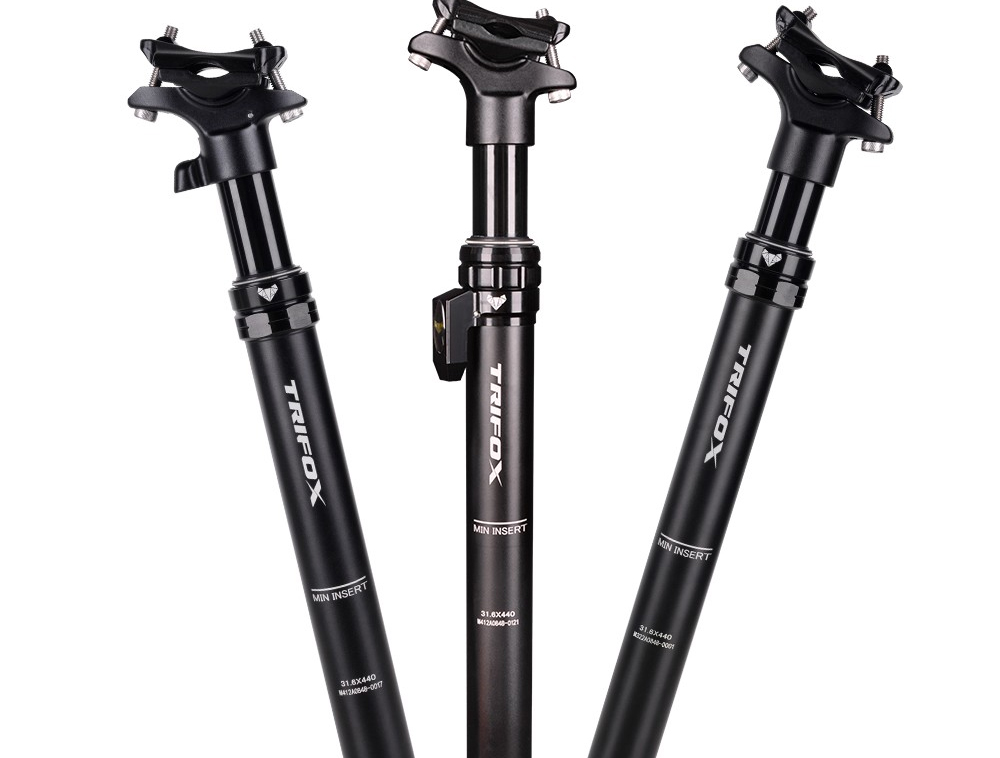
Cycling is not only a fun and efficient way to get around, but it's also a fantastic workout. Whether you're a commuter, a weekend rider, or a seasoned athlete, having the right accessories can significantly improve your comfort, control, and overall cycling experience. Here’s a rundown of essential bicycle accessories every cyclist should consider for better comfort and control on the road or trail. 1. Cycling Gloves Cycling gloves are a must-have for comfort and control. They provide grip, which is crucial for handling the handlebars securely, especially during longer rides or in challenging weather conditions. Gloves with padding also help to reduce pressure on your palms, minimizing numbness and discomfort during long rides. Additionally, many cycling gloves feature moisture-wicking fabric to keep your hands dry, and some models even offer touchscreen-compatible fingertips so you can use your phone without removing them. 2. Saddle and Seat Cushion The saddle is one of the most important components of a bicycle when it comes to comfort. An uncomfortable seat can quickly turn a pleasant ride into an agonizing experience. Consider upgrading to a saddle that fits your body type and riding style. If you're a commuter or a recreational rider, a more cushioned seat might be the way to go. For those tackling longer rides or more intense cycling, a performance-oriented saddle with a cut-out for pressure relief may provide the best balance of comfort and support. Adding a seat cushion or padding is another great option, especially for riders who need a bit more comfort without sacrificing performance. Many cycling-specific seat cushions are designed to provide extra padding while remaining lightweight and breathable. 3. Pedals and Cleats Pedals and cleats are critical for efficient power transfer and control. Upgrading to clipless pedals (those that attach to cleats on your shoes) can improve your pedaling efficiency by allowing you to both push down and pull up on the pedals. This can make a significant difference, especially during longer rides or when climbing hills. If clipless pedals aren't your style, ergonomic platform pedals can also provide a more comfortable and controlled ride. These often feature larger surfaces, better grip, and sometimes additional cushioning to reduce pressure on the feet. 4. Handlebar Tape or Grips Handlebar tape or grips are essential for ensuring a comfortable and controlled ride. For road cyclists, a padded handlebar tape can provide a better grip and reduce vibrations from the road, which can lessen fatigue during long rides. On the other hand, mountain bikers or casual cyclists might opt for ergonomic grips, which help reduce hand strain and provide extra control when navigating rough terrain. Both options are available in various materials, such as cork, foam, or gel, which cater to different preferences for comfort and grip. 5. Water Bottle and Cage Staying hydrated during a ride is crucial, and a good water bottle and cage are essential accessories to ensure you can easily access water while cycling. A bottle with an ergonomic design can fit comfortably in your hand and be easy to drink from, while a quality cage keeps your bottle secure but easy to remove when needed. Consider looking for lightweight, durable options that won't add unnecessary weight to your bike. 6. Lights and Reflectors Safety is key when cycling, particularly when riding in low-light conditions or at night. A front light illuminates your path, while a rear light increases your visibility to others, especially in traffic. Additionally, adding reflectors to your bike and clothing can improve your visibility to drivers and other cyclists. Many modern bike lights come with rechargeable batteries and are designed to be compact and lightweight, making them easy to attach and remove. Conclusion While cycling can be a simple and enjoyable activity, the right accessories can make a significant difference in both comfort and control. From padded gloves and ergonomic saddles to efficient pedals and safety lights, investing in quality bike accessories not only enhances your experience but also helps protect your body and improve your performance. Whether you're just starting out or you're a seasoned rider, these essentials will help make every ride more enjoyable and safer. For more information on high-quality cycling accessories, check out the wide selection of Trifox Bike bicycle accessories, where comfort and performance meet innovation.
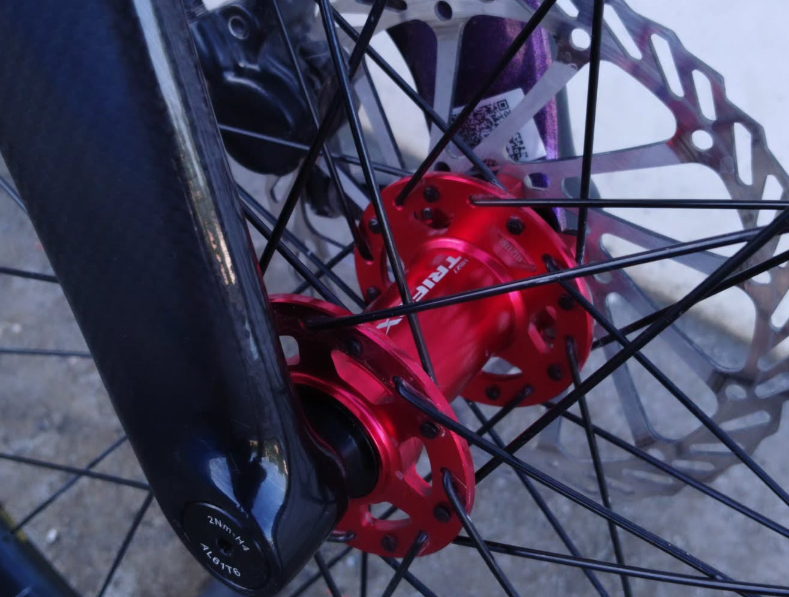
When it comes to cycling, the performance of your bike isn’t just determined by your frame or gears. The wheels play a pivotal role, and within the wheels, the wheel hubs and associated parts are often the unsung heroes of your ride. Wheel hubs are crucial to your bike’s overall performance, affecting everything from speed to handling, efficiency, and comfort. 1. Efficient Power Transfer with Quality Hubs Wheel hubs are at the heart of your bike’s wheel system, and they play a significant role in how power is transferred from your pedals to the ground. When you pedal, the energy you generate is transmitted through the drivetrain and into the wheel hubs. A high-quality hub can efficiently transfer this energy with minimal loss, making your efforts more effective. This efficiency is essential for long rides, competitive cycling, and hilly terrain where every bit of energy counts. For example, hubs with a higher engagement rate—meaning the number of points where the pawls inside the hub engage—provide a quicker response to your pedaling. This is particularly advantageous when you’re climbing hills or sprinting, as it allows you to accelerate faster and transfer more of your power to the road without losing momentum. 2. Smoothness and Low Friction for Better Performance Another key factor in how hubs affect cycling performance is their smoothness and level of friction. High-quality hubs are designed to reduce friction to a minimum, ensuring that your wheels spin freely with less effort. Hubs with high-quality bearings—often ceramic or sealed ball bearings—are more efficient at reducing friction compared to low-quality bearings. This means less energy is wasted during your ride, making it easier to maintain speed, especially during long-distance rides or on flat sections of road. Smooth-running hubs are also less prone to wear and tear, which can result in improved longevity and lower maintenance costs over time. Hubs that are built with durability in mind can handle the rigors of various terrains without compromising performance. 3. Weight Considerations for Better Handling Wheel hubs also impact the overall weight of your bike. Lighter hubs can contribute to a faster and more responsive ride, particularly for riders who participate in competitive cycling or racing. A lightweight hub allows your bike to accelerate more quickly, especially when transitioning between gears or during a sprint. On the other hand, heavier hubs can slow you down, particularly when climbing hills or navigating tight corners. However, it's important to balance weight with durability and strength. For instance, carbon hubs may be lighter but could be less durable on rougher terrains compared to more robust aluminum hubs. Choosing the right hub for your needs and riding conditions is essential to ensure that you don't sacrifice performance for weight savings alone. 4. Improved Braking Performance with the Right Hubs The interaction between your hubs and brake components can significantly impact your overall braking performance. For cyclists who use rim brakes, the quality of the wheel hubs can affect how evenly and effectively your braking surfaces work. Poor-quality hubs can lead to uneven braking, while high-quality hubs ensure that the wheels are aligned correctly for smooth and consistent braking power. For disc brake-equipped bikes, the hub's compatibility with the rotor and the ability to withstand heat buildup is equally important. A quality hub helps maintain the structural integrity of the disc brake system, reducing the risk of warping or overheating, which can compromise braking efficiency and safety. 5. Durability for Longevity When it comes to cycling, durability is key—especially if you ride regularly or tackle rough terrain. The right hubs, built with high-quality materials and precision engineering, offer improved longevity. Hubs made from durable materials like aluminum or steel tend to be more resilient to impacts, moisture, and dirt. This is particularly crucial for off-road cyclists or mountain bikers who face harsh conditions that can wear out components faster. Additionally, hubs with sealed bearings or internal grease systems are better at keeping out dirt and water, ensuring the hubs maintain their smoothness and performance over time. This means less maintenance and fewer repairs, allowing you to focus more on your ride and less on frequent bike tune-ups. 6. Customization for Specific Cycling Needs One of the most attractive features of modern wheel hubs is the variety of options available for different types of cycling. Whether you're a road cyclist, mountain biker, or triathlete, there are hubs specifically designed to meet the needs of your riding style. Road cyclists may opt for lightweight hubs with quick engagement for improved acceleration, while mountain bikers might prioritize durability and the ability to handle rough terrain. Hubs also come in different axle types and configurations, allowing you to customize your bike to fit your riding style. For instance, through-axle hubs offer increased stability and strength, particularly for off-road cycling, while quick-release hubs provide convenience for road cyclists who need to make frequent tire changes. Wheel hubs and their associated parts are crucial to your bike’s overall performance. From improving power transfer and reducing friction to enhancing comfort and longevity, the right hubs can make a noticeable difference in your cycling experience. Investing in quality wheel hubs ensures that your bike runs more efficiently, lasts longer, and delivers a smoother ride—whether you're on the road, trail, or competing in races. By understanding how wheel hubs influence your performance, you can make better choices when upgrading your bike, ensuring a more enjoyable and efficient ride every time.
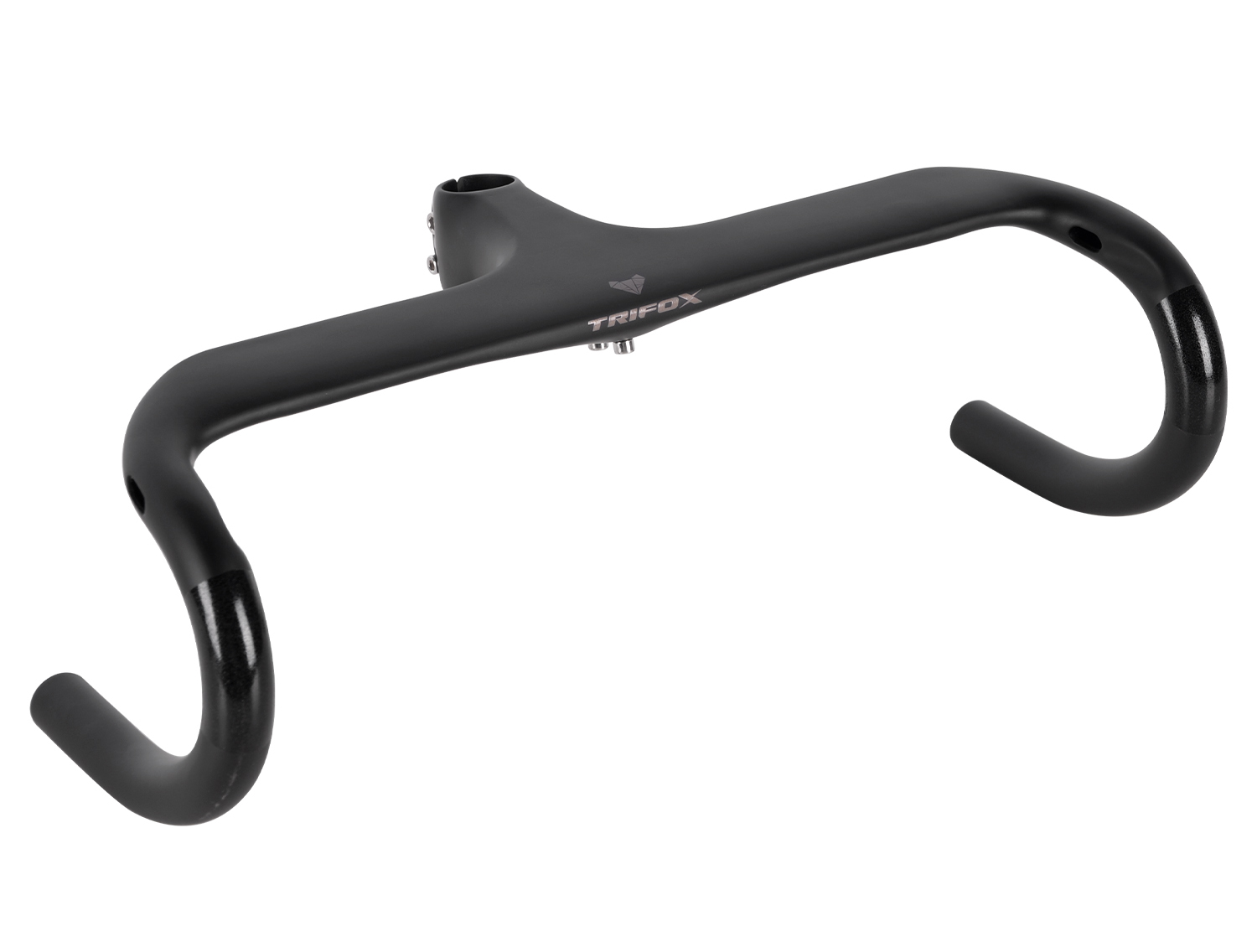
For many cyclists, the handlebars are a crucial component that can significantly affect comfort, control, and performance. When it comes to upgrading your bike, one of the best investments you can make is switching to carbon drop bars. While traditional aluminum bars have been the standard for years, carbon drop bars have quickly gained popularity for their impressive benefits. Whether you're a seasoned road cyclist or a weekend rider looking for an upgrade, carbon drop bars can provide advantages that are hard to ignore. Here’s why you should consider making the switch. 1. Lightweight Design for Enhanced Performance One of the primary reasons to switch to carbon drop bars is their lightweight nature. Carbon fiber is known for being incredibly strong yet light, which means you can reduce the overall weight of your bike without compromising on durability. In cycling, every gram counts, especially when you’re climbing hills, sprinting, or racing. By switching to carbon drop bars, you’ll enjoy quicker acceleration and improved maneuverability. For road cyclists, the weight reduction can make a significant difference in long-distance rides or during climbs, where even a small decrease in bike weight can lead to better performance. Carbon drop bars are ideal for those looking to maximize every ounce of effort and push their limits on the road. 2. Increased Comfort with Vibration Damping One of the standout features of carbon drop bars is their ability to dampen vibrations. On long rides, especially on rough or uneven roads, the constant vibrations from the handlebars can lead to fatigue, discomfort, and even numbness in your hands. Carbon fiber, by its nature, absorbs road vibrations much better than aluminum or steel. By reducing the vibrations transmitted through the handlebars, carbon drop bars allow you to ride longer without experiencing discomfort. This is particularly beneficial for cyclists who enjoy endurance rides or those who spend a lot of time on mixed surfaces. With carbon drop bars, you’ll feel less strain on your wrists and shoulders, enabling you to maintain a more comfortable riding position for extended periods. 3. Improved Stiffness and Control While carbon drop bars are lightweight, they don’t sacrifice stiffness. In fact, they offer superior stiffness compared to aluminum bars. This stiffness translates to improved power transfer when you’re riding hard or sprinting. When you apply pressure to the handlebars, a stiffer bar ensures that the energy you generate is transferred directly to the wheels rather than being absorbed by flexing in the handlebars. This leads to a more responsive and efficient ride. Additionally, the improved stiffness of carbon bars offers better control, especially during high-speed descents or in technical corners. The enhanced feedback from the road makes it easier to maintain stability and handle your bike with precision. 4. Aerodynamic Advantage Another reason to consider carbon drop bars is their aerodynamic design. Carbon fiber allows for more intricate shaping, making it possible to create handlebars that reduce wind resistance. Many carbon drop bars are designed with an aerodynamic profile, which can help you maintain higher speeds with less effort. This is particularly useful for time trials, road racing, or cyclists looking to maximize their performance on fast, flat sections of a ride. In addition to their aerodynamic shape, carbon drop bars often come with a variety of ergonomic features that enhance comfort and performance, such as ergonomic bends and positions that reduce strain on your wrists and arms. 5. Durability and Longevity Carbon drop bars are incredibly durable and resistant to corrosion, making them an excellent long-term investment for your bike. Unlike metal handlebars, which may corrode over time, carbon bars can withstand the elements much better, especially in wet or humid conditions. Carbon’s ability to handle repeated impacts and resist wear and tear ensures that your drop bars will last much longer than aluminum bars. Moreover, carbon fiber is less prone to bending or cracking under stress compared to aluminum, which means you can ride with confidence, knowing your handlebars will hold up in tough conditions. This durability, combined with the lightweight and comfort benefits, makes carbon drop bars a wise choice for any serious cyclist. 6. Customization and Versatility Carbon drop bars are available in a variety of shapes, sizes, and designs to suit different types of cycling. Whether you're a road cyclist, gravel rider, or a cyclist who participates in triathlons, there’s a carbon bar designed specifically for your needs. Many carbon bars feature ergonomic shapes and different hand positions that improve comfort and reduce fatigue, making them suitable for long-distance rides and races. Additionally, carbon bars often offer greater flexibility in terms of setup, with some models allowing you to adjust the width, drop, and reach of the handlebars to achieve the perfect fit. This customization ensures that you’re riding in a position that enhances both comfort and performance. Switching to carbon drop bars is a game-changer for cyclists looking to improve their ride. The combination of lightweight design, enhanced comfort through vibration damping, increased stiffness for better power transfer, and the added aerodynamic advantages makes carbon drop bars a must-have for serious cyclists. Whether you're racing, touring, or simply riding for pleasure, upgrading to carbon drop bars can help elevate your performance and riding experience. If you're ready to take your cycling to the next level, consider making the switch to carbon drop bars. Not only will you notice the difference in comfort and control, but you’ll also be investing in a long-lasting, high-performance upgrade that will enhance your cycling for years to come.
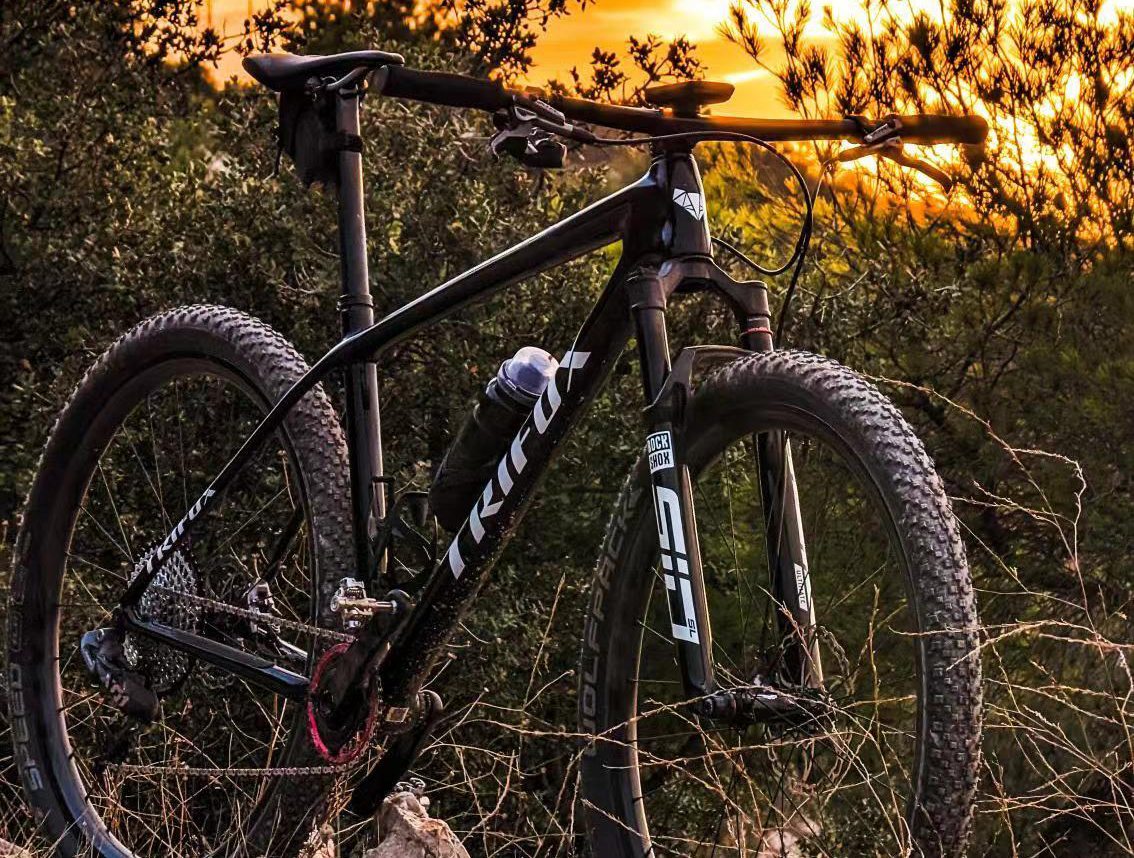
In the world of cycling, performance and weight are always at the forefront of a cyclist’s mind. Whether you're an avid racer or a weekend rider, the quest for a faster, smoother, and lighter ride never ends. Among the innovations that have revolutionized the sport, carbon bike frames have emerged as one of the most significant advancements in lightweight cycling. Known for their superior strength, reduced weight, and enhanced riding experience, carbon frames are becoming the go-to choice for riders across all disciplines. In this blog post, we’ll explore why carbon frames are the future of lightweight cycling and why they may be the perfect choice for your next bike upgrade. 1. Incredible Strength-to-Weight Ratio One of the primary reasons cyclists turn to carbon frames is their unmatched strength-to-weight ratio. Carbon fiber is incredibly strong yet extremely lightweight, making it the ideal material for bike frames. In fact, carbon frames are often much lighter than their aluminum and steel counterparts without sacrificing durability or performance. This is especially important for competitive cyclists, where every gram saved can translate into faster speeds and improved race times. The lightweight nature of carbon frames makes climbing hills and accelerating on flat terrain significantly easier. Whether you’re racing up steep inclines or pushing the limits on a time trial, a carbon frame provides the responsiveness and agility needed to optimize your cycling performance. The lighter weight of the bike means less energy is required to propel it forward, allowing for more efficient cycling overall. 2.Superior Stiffness and Power Transfer Another compelling reason to choose carbon frames is the stiffness they offer, which results in enhanced power transfer. When you pedal, the energy you generate needs to be efficiently transferred through the frame to the wheels. Carbon frames excel at this by offering a stiffness that allows for optimal power transfer, meaning more of your effort goes directly into speed, rather than being absorbed by the frame. This feature is particularly important for road racers and cyclists who demand the highest levels of efficiency from their bikes. Carbon frames can be engineered to deliver stiffness where it’s needed most, such as in the bottom bracket area (where the pedals attach), while still providing enough flexibility in other parts of the frame to absorb vibrations from the road. This balance between stiffness and comfort is one of the reasons carbon frames are so highly regarded in competitive cycling. 3. Customization for Specific Riding Needs Carbon fiber is highly customizable, allowing manufacturers to design frames that cater to a wide variety of cycling disciplines. Whether you're looking for a frame that prioritizes aerodynamics for road cycling or one that offers shock absorption for mountain biking, carbon can be molded to meet specific needs. Trifox, for example, offers a range of carbon bike frames that are designed for various types of cycling, from lightweight road frames to more durable mountain bike frames. The ability to fine-tune the composition and structure of the frame ensures that carbon frames can meet the demands of any rider, no matter their discipline or riding style. This level of customization makes carbon frames the perfect choice for cyclists who are serious about performance. 4. Vibration Damping for a Smoother Ride A key advantage of carbon frames is their ability to dampen road vibrations. Unlike aluminum or steel, which can transmit vibrations directly through the frame to the rider, carbon fiber naturally absorbs and dissipates these shocks. This leads to a smoother, more comfortable ride, especially on rough or uneven surfaces. For long-distance cyclists, this means less fatigue and more comfort over time, while for racers, it can lead to a more controlled ride at high speeds. Carbon’s ability to reduce road buzz allows cyclists to focus on their performance without being distracted or uncomfortable due to vibrations. 5. Durability and Longevity While carbon frames are lightweight and thin, they are also incredibly durable. Modern carbon frames are designed with multiple layers of carbon fiber, arranged in a way that makes them resistant to cracking and damage. They can withstand impacts better than one might expect from such a light material, and advancements in carbon technology continue to improve their resilience and lifespan. Carbon frames are also more resistant to corrosion than metal frames, which means they can last for many years with proper care and maintenance. This longevity makes carbon frames a good long-term investment for serious cyclists who want to get the most out of their bike. In the world of cycling, where every advantage counts, carbon frames stand out as the future of lightweight cycling. Their combination of strength, lightweight construction, stiffness, vibration damping, and durability makes them the ideal choice for cyclists who want to maximize performance and comfort. Whether you're looking to shave off those extra grams in a race or simply want a bike that offers the best in speed and handling, a carbon frame is an investment that can take your cycling experience to the next level. As technology continues to evolve, carbon frames will only become more refined, offering even greater performance benefits. If you're serious about cycling, it’s clear that carbon frames are the future—and they might just be the perfect upgrade for your next bike.

















